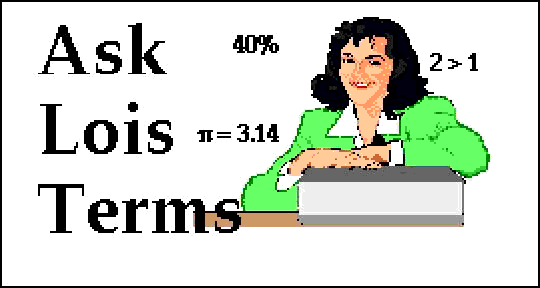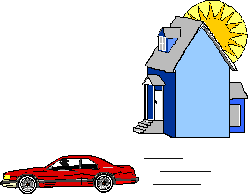

Dear Lois: Every fall when we go back to school, we have to learn about the math properties--you know, commutative, associative, distributive. I get them all mixed up. Can you help me get them straightened out? Mixed-Up Michelle
Dear Michelle: That's a tall order! But I'll see what I can do. Suppose I talk about the commutative property in this issue and take up the others at a later date.

Think of the commutative property this way: Many people commute to work. They get up at home in the morning, dress, eat breakfast, brush their teeth, then drive or take the train or a bus to work. In other words, they change places.

In the afternoon they change places again and drive or ride home. So we call them commuters. The commutative property means " to change places."
Watch how that works with numbers. We know that
So 2 and 3 can change places in an addition problem without changing the answer.
The same is true in multiplication.
So remember: The commutative property means that the numbers change places.
Dear Lois: You helped me learn 7 x 8 = 56 and 7 x 7 = 49. Could you help me with 6 x 7? Your friend, Roger D.
Sure thing, Rog! Let's stick to football. Here's a cheer that should help you remember 6 x 7.
And speaking of the commutative property, you can switch the six and seven around in the cheer to help you remember 7 x 6 = 42.
Dear Students: Here are some fun puzzles for you to try. Which of the figures below are traceable? That is, which ones can you trace without lifting your pencil or retracing lines you have already traced?

Read more about the properties of math!
Associative Property
Distributive Property
Return to Home page.
"Ask Lois Terms" © 1997 Lindsay-Livingston